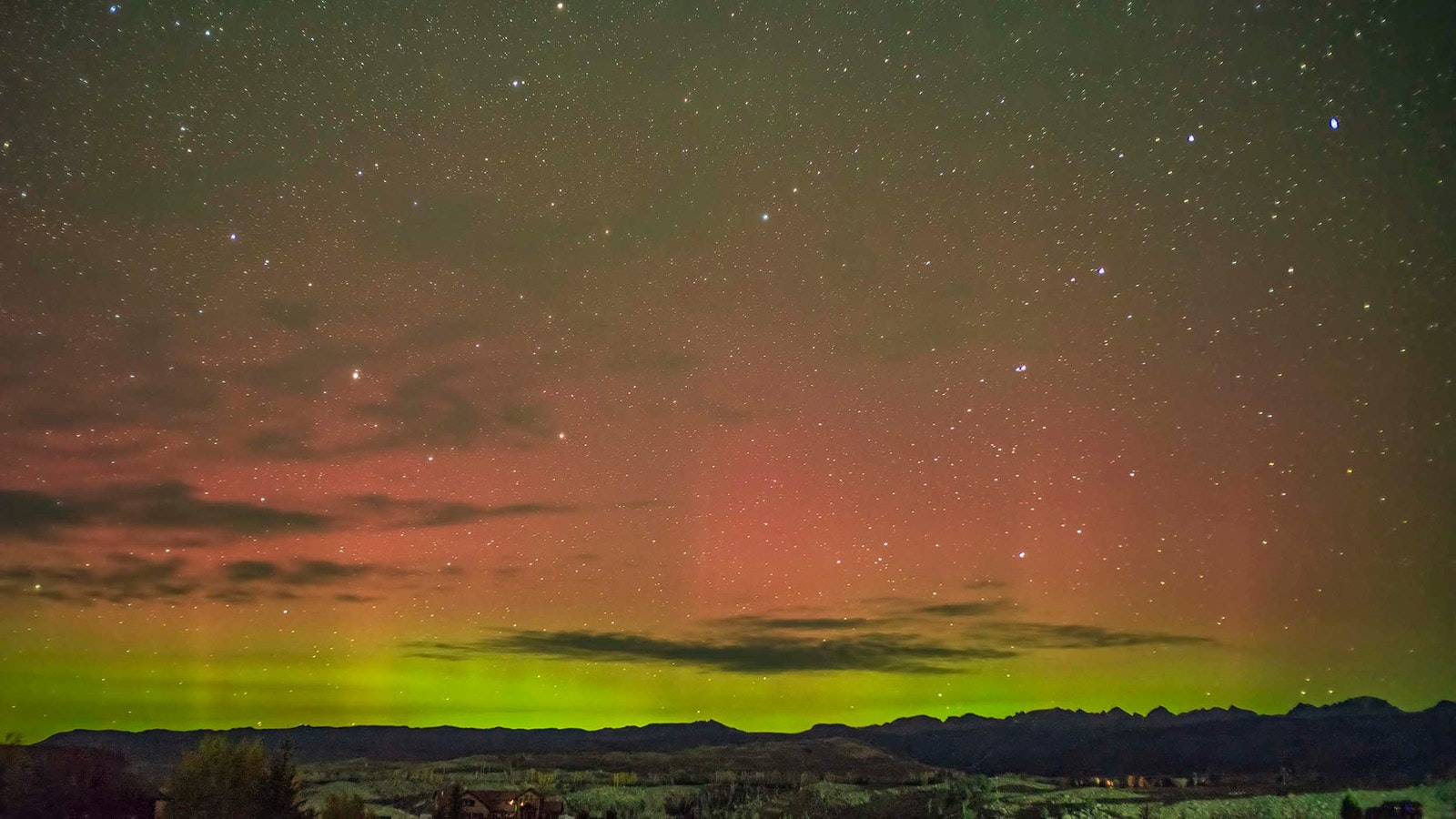As if springtime in Wyoming isn’t volatile enough with gale-force winds, rain, snow and even sleet, now the National Weather Service’s Space Weather Prediction Center has issued a Geomagnetic Storm Watch for Saturday. Four separate coronal mass ejections (CMEs) have emanated from the sun and could cause geomagnetic storms once they reach Earth.
For Wyomingites, that could mean a brilliant aurora in the night sky Friday and Saturday. It could also cause a lot of trouble for anyone with an electronic device, which is to say nearly everyone.
Cowboy State Daily meteorologist Don Day won’t guarantee anything when it comes to CMEs. There are signs that there could be a dazzling display this weekend, but we won’t know the impact of the four CMEs until we’re impacted.
“If I were an aurora watcher or photographer, I would certainly be ready,” he said.
Four Into One
CMEs are common, but most of the time they don’t drum up much alarm on Earth because the sunspot energy is launched into random directions through space.
When a CME reaches Earth, it creates the spectacularly colorful nighttime displays called auroras. That’s the result of one CME reaching Earth, so imagine what multiple CMEs might bring.
“There have been four coronal mass ejections here over the last day or two, and they are directed towards the Earth,” Day said. “Whether or not we’ll see an aurora is always extremely difficult to nail down, but this appears to be a strong event because it's multiple ejections, not just one.”
That’s why the Space Weather Prediction Center issued a Geomagnetic Storm Watch. The agency said the CMEs “are anticipated to merge and arrive at Earth by late on May 10 or early on May 11.”
The result of the four merged CMEs could be an aurora visible as far south as Alabama up to northern California. That puts Wyoming well within the range of seeing a spectacular show in the night sky, but Day wouldn’t guarantee anything.
“These are very difficult to predict,” he said. “(NOAA) is showing a pretty high probability of aurora being seen at mid-latitudes. But these things always surprise, or they always disappoint. You can really oversell these, but it looks like there’s a chance.”
If that were all there was to it, the Space Weather Prediction Center could admire the aurora like everyone else. But when that much solar energy is hurtling toward Earth, there could be some disruptive consequences.

Severe Space Storm
The National Oceanic and Atmospheric Administration (NOAA) has a Space Weather Scale for events like these. The upcoming geomagnetic storm is ranked as a G4 Severe, which is “very rare," according to the Space Weather Center.
NOAA claims G4 storms could lead to “possible widespread voltage control problems, and some protective systems will mistakenly trip out key assets from the grid.”
Day said these storms should be taken seriously, given their potential impact on electronic systems on the ground and in the sky.
“The Space Weather Center is calling this a potentially significant event,” he said. “Not the level of the Carrington Event, but it could be a strong one.”
The Carrington Event was the most intense geomagnetic storm in recorded history. When the CME that caused it reached Earth on Sept. 1, it caused tremendous damage to telegraph stations worldwide.
If a geomagnetic storm of the same magnitude occurred today, it would cause extended outrages on Earth’s electrical power grids, resulting in widespread blackouts and electromagnetic disruptions. The energy could even be strong enough to damage satellites and drive them out of their orbital paths.
Luckily, the geomagnetic storm reaching Earth Saturday isn’t anticipated to be comparable to the Carrington Event. However, Day said nobody who could be potentially impacted by the energy of the combined CMEs is letting their guard down.
“Nine out of 10 times, the CMEs have enough energy to cause an aurora but not enough to cause any other problems,” he said. “But they should be taken seriously, and this one is certainly going to be watched closely.”
Better Weather For Space Weather
While geomagnetic storms can cause tremendous disruptions to the planet’s electric grids, they don’t have any impacts on the day-to-day weather. The combined CMEs should reach Earth late Friday, but that won’t alter Wyoming’s weekend forecast.
That’s a good thing, according to Day. With the way weather patterns are trending, there’s a chance the night skies will be clear enough to see the aurora, assuming there’s one to see.
“From a weather standpoint, skies are going to start to clear across the state enough, but not completely,” he said. “I think there's an opportunity this current storm is going to move out just in time that, if we do get an aurora, there's a chance we’ll see it.”
The sun is now in the midst of its solar maximum, a time when a number of sunspots generate more CMEs and shoot them into space. It’s already a good time to see auroras in Wyoming, but Day acknowledges that this weekend’s event is notable.
“This is exactly what you expect when you get into solar maximum,” he said. “Although looking at the potential range on the Space Weather Center’s graphic, you don't see that very often. Auroras are very difficult to predict, but it’s looking like there's a chance.”
Andrew Rossi can be reached at arossi@cowboystatedaily.com.





